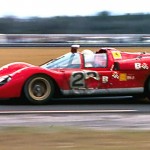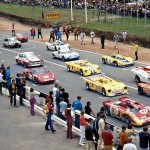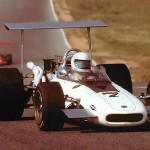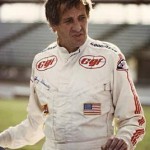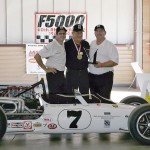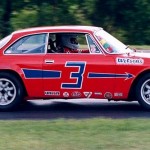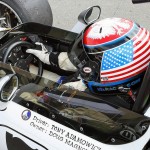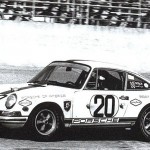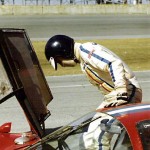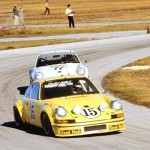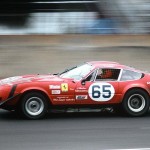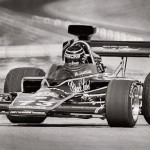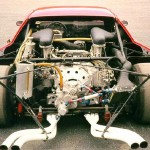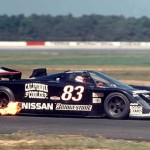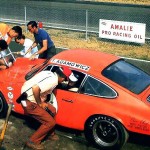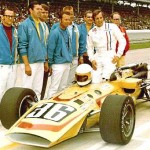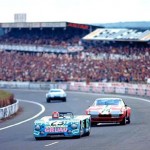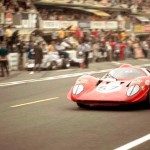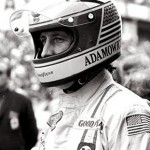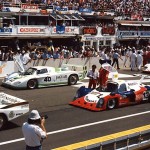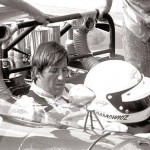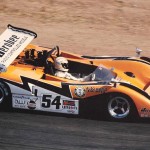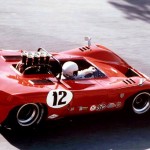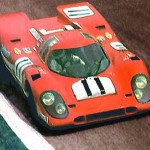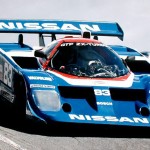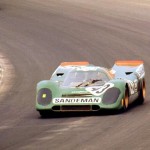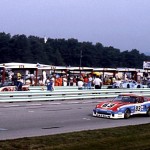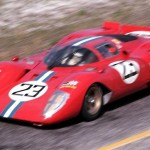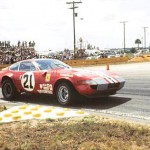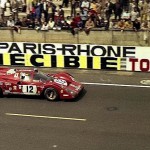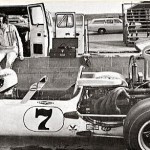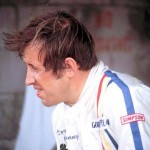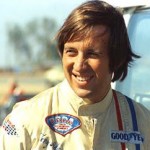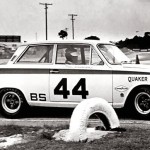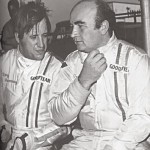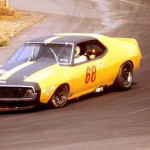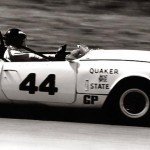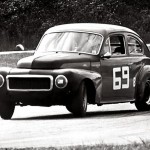Legendary lives: Tony Adamowicz
Born in up-state New York in 1941, Tony Adamowicz, or Tony ‘A2Z’ as he is fondly often referred to, became interested in cars as a young boy, and was inspired in the late 1940s by the emerging Ferrari brand. Little did he know at the time that he would one day race for the Prancing Horse in big international sportscar races around the world.
Adamowicz’s first foray into competitive motoring came at the wheel of a humble Volvo PV544 – his then daily driver. Having enrolled on a racing school course in Maryland, he defeated faster and more nimble machines to win the end-of-course race.
That was about as serious as Adamowicz’s exploits would get for a while. A career in the military meant that work came first. Employed by the US government, Adamowicz found himself working for five years as a communication liaison expert at the Whitehouse under three presidents: Dwight Eisenhower, John F Kennedy and Lyndon Johnson.
But the racing bug, engrained in Adamowicz since childhood, soon precipitated a desire to get back behind the wheel. His prayers were answered in 1964 while working for a garage in Pennsylvania. Having been able to work on his trusty Volvo in the corner of the workshop, Adamowicz entered numerous national championship races and was soon spotted by Bob Tullius of Group 44 fame.
Running a Triumph Spitfire, Lotus Cortina and Dodge Dart for Tullius gave Adamowicz a flavour of what it was like to race professionally. And that feeling increased in 1966 when Adamowicz shared Tullius’s Dodge Dart in the new Sports Car Club of America’s Trans-Am series. The duo finished second in the opening meeting at Florida’s Sebring airfield circuit behind a young Alfa Romeo-saddled Austrian by the name of Jochen Rindt.
An opportunity to run at the front of the Trans-Am championship came in a Porsche 911 a few years later. Run by Marvin Davidson, it was the car Adamowicz lusted after. And that proved entirely justified when he secured the 1968 under-2 litre title in the German machine.
With a championship title now on his CV and a desire to make it to the top of American racing, Adamowicz decided for 1969 that he should pursue single-seater racing and attempt to emulate his racing heroes, multiple Formula 1 world champions Juan Manuel Fangio and Jim Clark. With the help of Davidson, who purchased a year-old Eagle Formula 5000 car, Adamowicz set about tackling the competitive F5000 series.
The season did not start well. Testing the Eagle at Willow Springs in California, Adamowicz, who admitted he and the team were seriously out of their depths, crashed the car heavily, reducing it almost to scrap. Davidson had had the foresight to order a new Eagle from Dan Gurney’s All American Racers operation. Needless to say it was soon pressed into service. Despite being in pain from the battering he took in the Willow Springs shunt, Adamowicz finished third in the opening race of the season at Riverside behind winner John Cannon and runner-up Lothar Motschenbacher.
Incredibly, in what was his first season in a single-seater, Adamowicz went on to win the championship title thanks to victories at Seattle and Road America during the summer. With two titles in successive seasons under Marvin Davidson’s tutelage, Adamowicz was about to find himself thrust into serious manufacturer-backed motorsport.
Davidson was well connected and counted US Ferrari importer Luigi Chinetti among his associates. As a result, Adamowicz was offered a Ferrari drive in the 1970 Daytona 24 Hours – the legendary round-the-clock enduro that for years has attracted all the big names. He shared a 312P with Briton David Piper but spare parts for the sister car driven by former F5000 rival Sam Posey and ex-Ferrari grand prix driver Mike Parkes meant that the Adamowicz/Piper car didn’t finish.
His performance in the Ferrari led to a drive in one of the most evocative and successful sportscars that ever raced: the Porsche 917. He would share Piper’s privately-run 917 at Monza, the Italian round of that year’s world sportscar championship. Gear linkage failure put paid to the car in the 1000km event, but Adamowicz had arrived as a fully-fledged sportscar ace.
Further success for Adamowicz in 1971 – he finished second at Daytona with Ronnie Bucknum in a Ferrari 512S and third in the legendary Le Mans 24-hour race alongside Sam Posey in a similar car – led to him becoming one of only five FIA International-rated American drivers. Additional outings in Piper’s 917 came at Watkins Glen and Kyalami.
In 1972, when sportscar racing’s rulemakers mandated a three-litre rule that outlawed the fearsome Ferrari 512 and Porsche 917, Adamowicz signed with John Wyer’s Gulf Mirage team and campaigned its new machine at the Osterreichring and Watkins Glen.
For the rest of the decade Adamowicz contested numerous events before turning his back on driving in the early 1980s. With that original bug not fully eradicated from his system though, he made a comeback in historic car club events, even tackling a 13-hour SCCA endurance race alongside friend and former rival Derek Bell. The event raised $35,ooo for charity.
The Eagle Formula 5000 in which Adamowicz tasted success more than 40 years ago was lovingly restored in time for the ruby anniversary celebrations in 2008. Unsurprisingly, he enjoyed the reunion. He set some pretty lairy laptimes, too!
More recently, Adamowicz has launched a website, www.a2zracergear.com, selling retro merchandise – much of it featuring the glorious 1960s and ’70s sportscars that he raced. It’s well worth a visit – you’re guaranteed to come away knowing a bit more about one of America’s coolest pedallers and armed with a funky T-shirt or cap.


